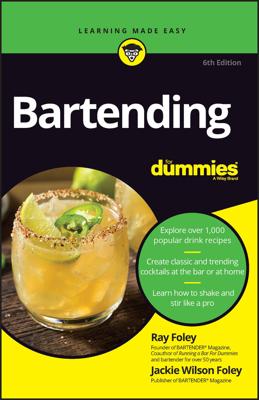Most bars are fully stocked bars, so patrons can order their favorite cocktails, such as a gin and tonic, Crown and Coke, or margarita. But many bar owners create specialized drink menus to steer patrons toward unique beverages and cocktails that customers can only get at their place. Spend some time thinking about what kinds of drinks you want to be known for, and then create a menu to match.
Selecting beers for your menu
Select three local brews, three national beers, three light beers, and three imports. You can choose more or fewer, depending on the size of your place. For example, your theme might demand that you keep 80 beers on tap.
Storing beer at the right temperature is an important factor in maintaining its quality. Beer requires cold storage, so make sure that your walk-in cooler (a refrigerated room with proper door seals and a thermostat to regulate the temperature) is large enough to accommodate your inventory.
Creating a signature cocktail menu
When owners concoct signature cocktails for their bars, they often choose to name one of them after the bar or the bar owner. In some cases, your signature cocktails match your food menu (like creating special margaritas to go with your happy-hour fajita bar). Whatever you choose, make sure that your signature cocktails are special to your place. You want to create a vibe that says, "You can only get this here."
Martinis are easy to use as a signature cocktail because you can simply change the garnish. You can use house-stuffed olives — filled with blue cheese, anchovies, hot peppers, and other stuffings with a strong flavor — to make a signature impact.
You'll likely sell many signature drinks, so make sure you choose something that's fairly easy to make. Or you can make them up in batches ahead of time for ease of service.
Infusions are a great way to make something truly special to your bar. An infusion is a vodka that's been infused with fruits, herbs, candies, vegetables, and the like for three to four days or more. By creating your own recipes for infusions, you can create a one-of-a-kind cocktail.
Here are a few things to keep in mind when making your own infusions:
- Choose organic produce. Pesticides and vodka don't mix.
- Clean all your ingredients before you place them in the vodka. Impurities and dirt can ruin the infusion.
- Choose glass jars with tight-fitting lids to create your infusions. Talk to your liquor purveyor to get free containers.
- Create and test the first batch of a new recipe in the back of the house (not behind the bar) to make sure that your ingredients don't turn the vodka an unappetizing color. The last thing you want is an interesting bottle filled with brown liquid in full view of your patrons.
- Create drinks using your infusions that appeal to your clientele.
Think about serving your specialty drinks in specialty glassware. Use a local garnish, a special glass, a special size, or something else that distinguishes them as your signature drinks.
Planning your wine list
Depending on your expertise, clientele, and food menu, you may have a fairly small wine list. Most true bars offer two or three reds, two or three whites, two champagnes, and a blush wine. Consider listing your selections on the menu in flavor categories.
Including nonalcoholic drinks
Don't forget to include signature nonalcoholic drinks on your menu. Designated drivers, expectant and nursing mothers, aspiring athletes, and others enjoy bars without consuming alcohol. Don't miss the chance to dazzle them with something beyond a virgin strawberry daiquiri.
If you're not feeling too creative in the nonalcoholic department, consider serving beverages made by companies such as SoBe, Snapple, or AriZona to help you fill this niche.

